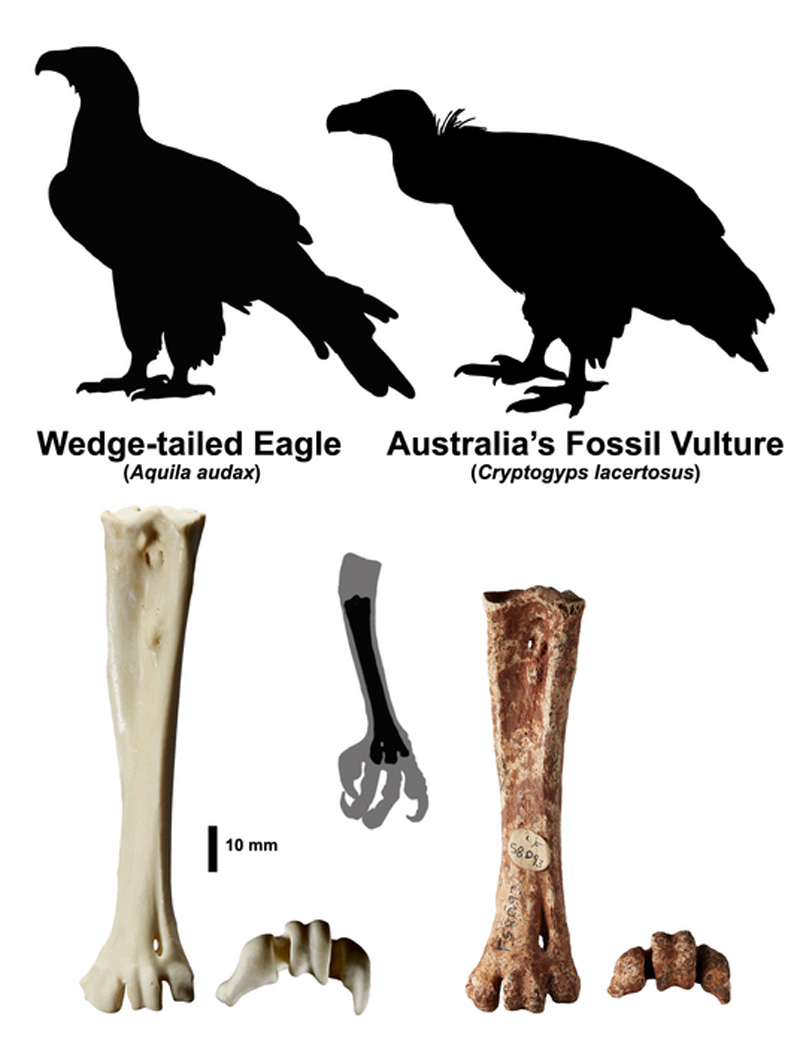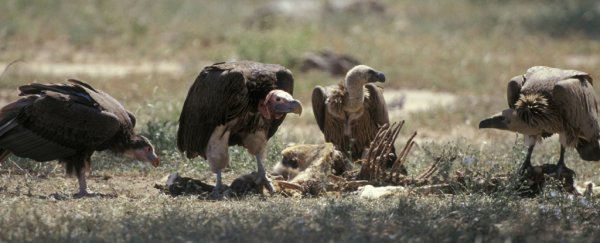For more than 100 years, paleontologists have thought that a fossil discovered in South Australia was a powerful grave eagle (Taphaetus lacertosus). Now, new research has revealed its true taxonomy: it's a vulture, and it's the first one discovered in the country.
The fossil is that of a Cryptogyps lacertosus (meaning powerful hidden vulture) and this scavenging raptor would have lived between 500 and 50,000 years ago. It's what's known as an 'Old World' vulture, and similar species are still around today – though not in Australia.
The reclassification highlights just how diverse the megafauna and other wildlife were in this part of the world back in the Pleistocene period, which began about 2.5 million years ago and ended around 11,700 years ago.
 Eagle and vulture comparisons. (Ellen Mather, Flinders University Paleontology Lab)
Eagle and vulture comparisons. (Ellen Mather, Flinders University Paleontology Lab)
"We compared the fossil material to birds of prey from around the world, and it became clear right away that this bird was not adapted to being a hunter, and so was not a hawk or an eagle," says paleontologist Ellen Mather from Flinders University in Australia.
"The features of the lower leg bone are too underdeveloped to support the musculature needed for killing prey. When we placed Cryptogyps in an evolutionary tree, this confirmed our suspicions that the bird was a vulture, and we are very excited to finally publish on this species."
This story starts in 1901 with the discovery of the first part of the fossil: a fragment of a wing bone found near the Kalamurina Homestead on the Warburton River in South Australia. Within a few years, it was described as being from an extinct relative of the wedge-tailed eagle.
In recent years, researchers (including those behind this latest study) started to question the classification of the fossil now known as C. lacertosus. It was suggested that Old World vultures may have existed during the Pleistocene in Australia and that this fossil might be one of them.
The discovery of new fossils from the Wellington Caves in New South Wales and Leaena's Breath Cave in the Nullabor Plains of Western Australia helped the researchers to prove it.
These vultures would have shared the skies with wedge-tailed eagles and looked down on some fairly large beasts – including the marsupial herbivore Diprotodon and the marsupial lion Thylacoleo, both now extinct.
"The discovery solves a mystery of what happened to so many megafaunal carcasses when the continent didn't have vultures," says paleontologist Trevor Worthy from Flinders University.
"Now we know they were here. They've been hidden in plain sight."
Another takeaway from the study describing C. lacertosus is that the diversity of predatory birds in Australia was much greater then than it is now.
Vultures play a crucial role in speeding up carcass decay and reducing disease spread – and now there are none left in Australia.
The researchers suggest that the demise of the vultures would have shaken up the ecological status quo, as other scavengers began to fill the same role – albeit in not quite the same way.
If C. lacertosus acted in a similar way to its modern-day relatives, then it would have been common for many of the birds to feed together on one carcass. This would have helped to give it a competitive edge over other animals.
"Today we're familiar with a wedge-tailed eagle picking at a kangaroo carcass on the roadside," says Mather. "Thousands of years ago, a very different bird would have filled the role of carrion consumer – one most people would now associate with the plains of Africa."
The research has been published in Zootaxa.
